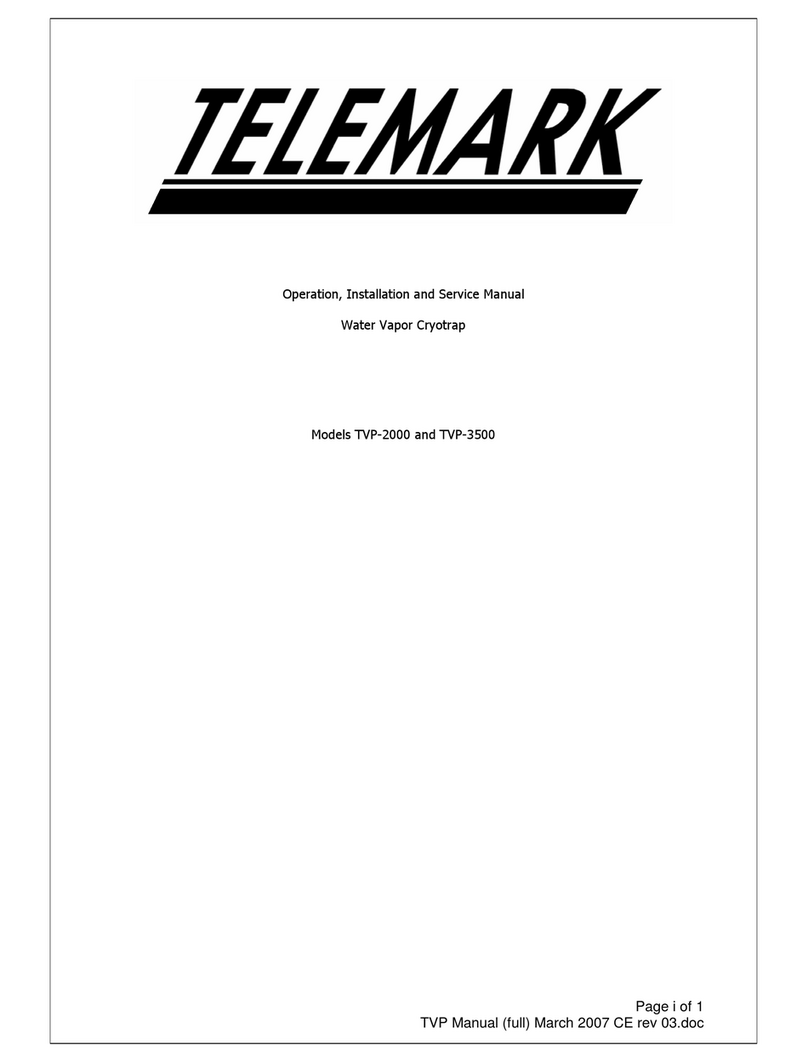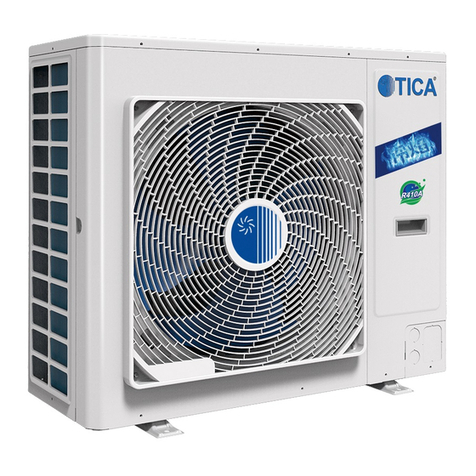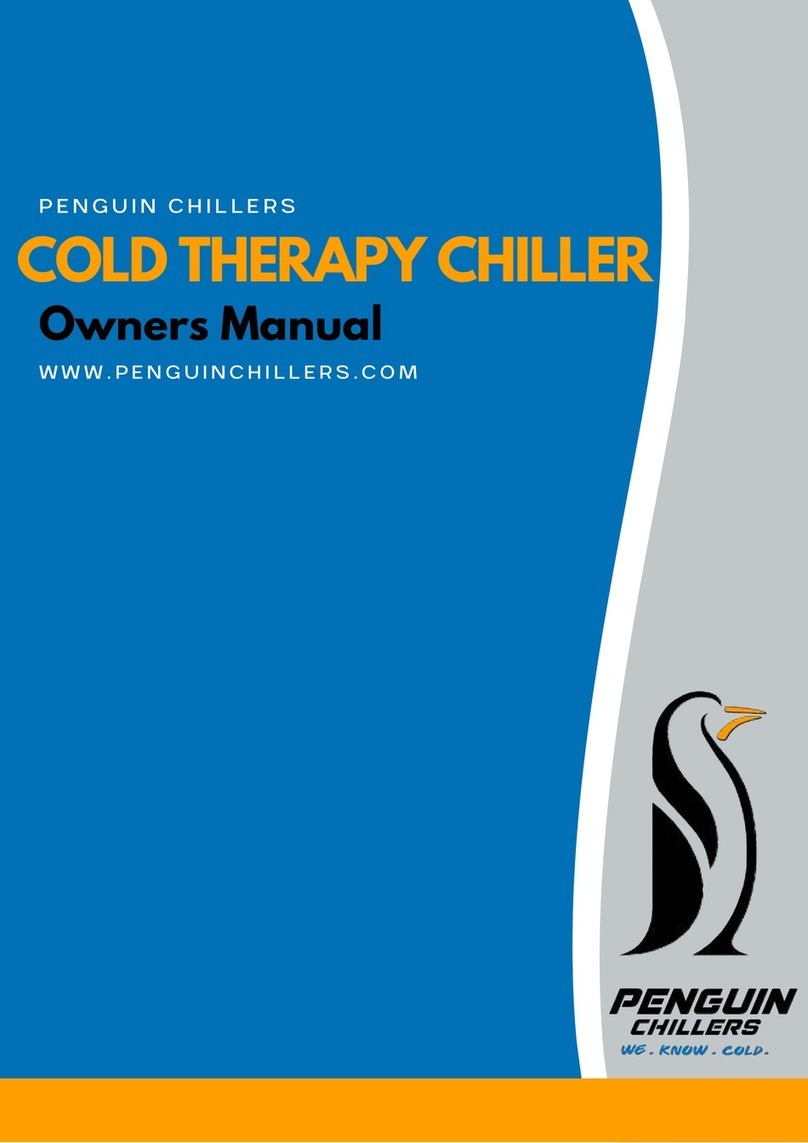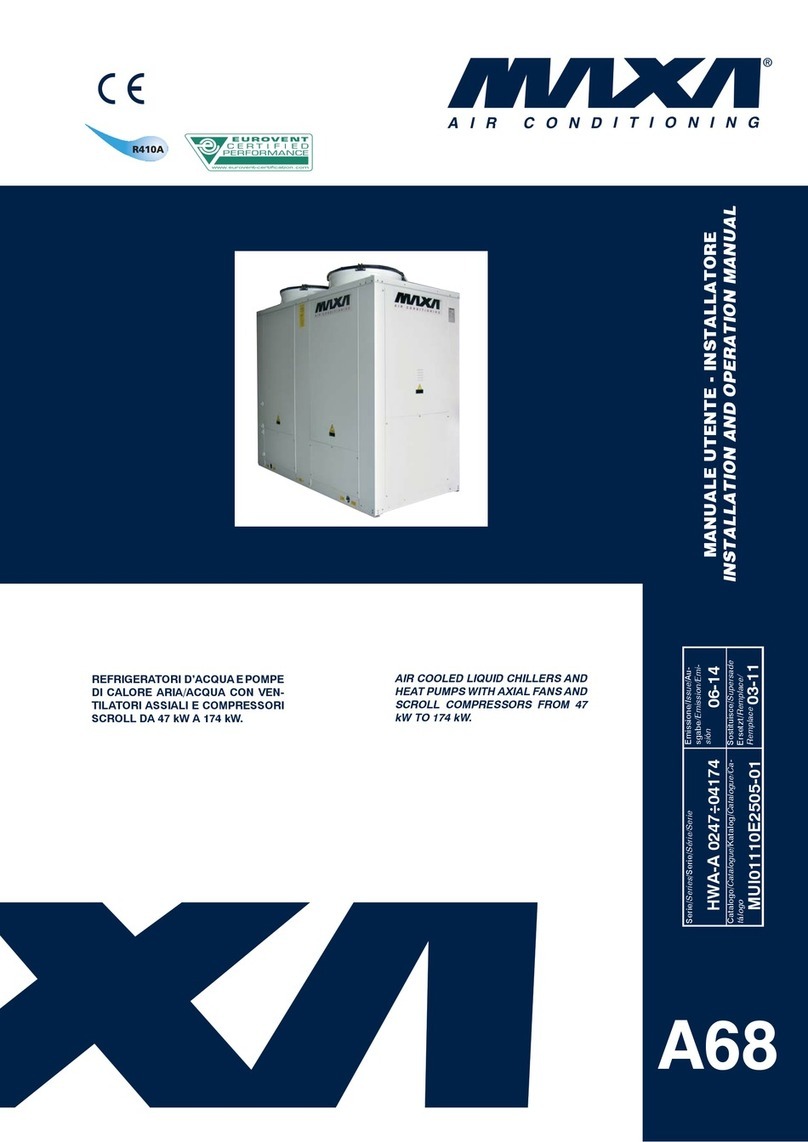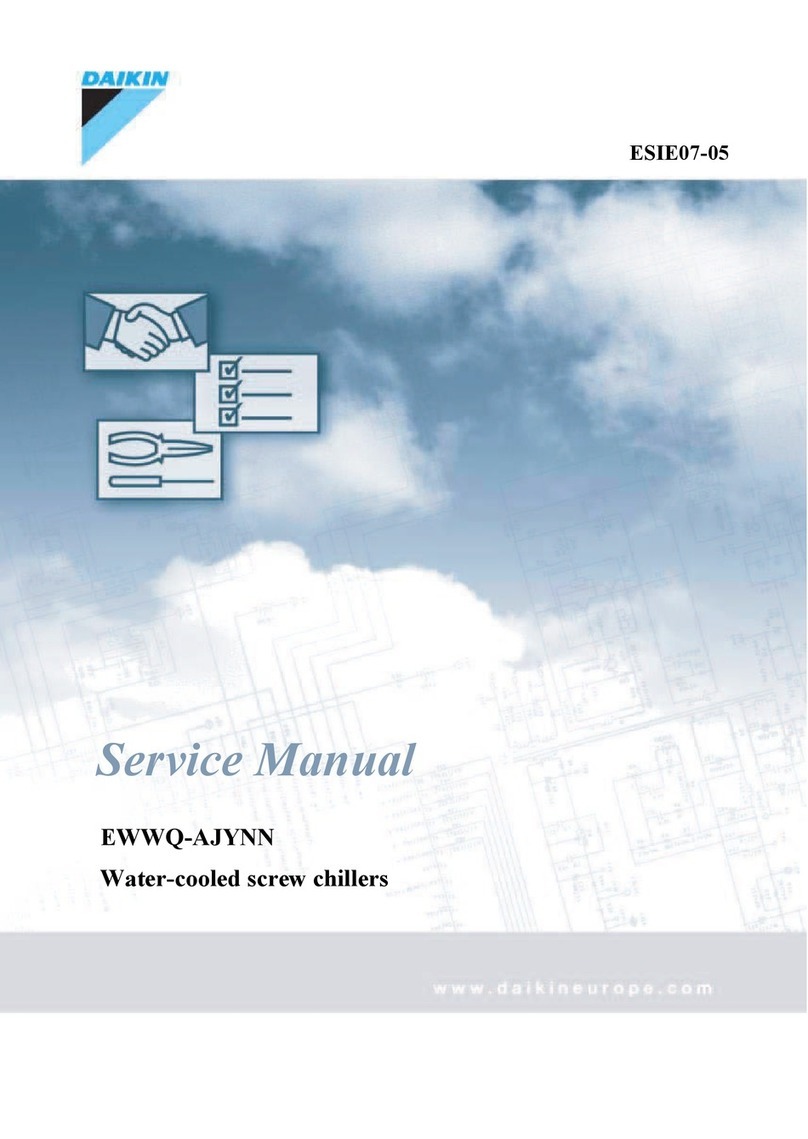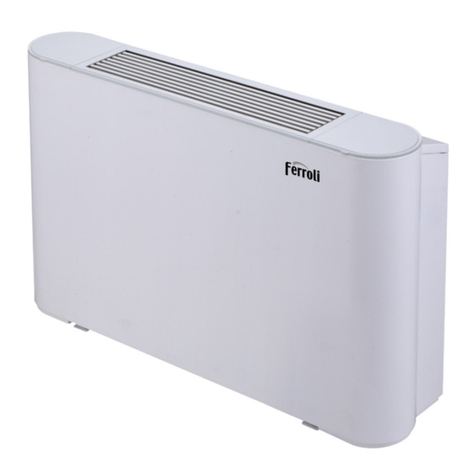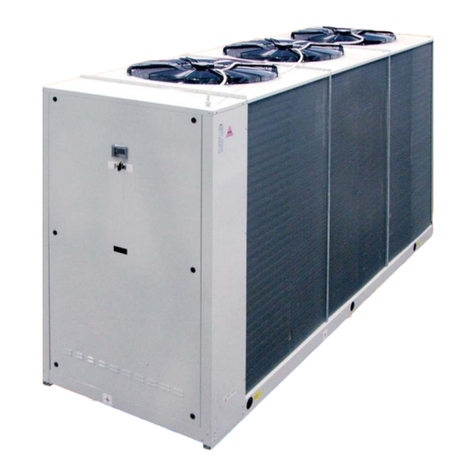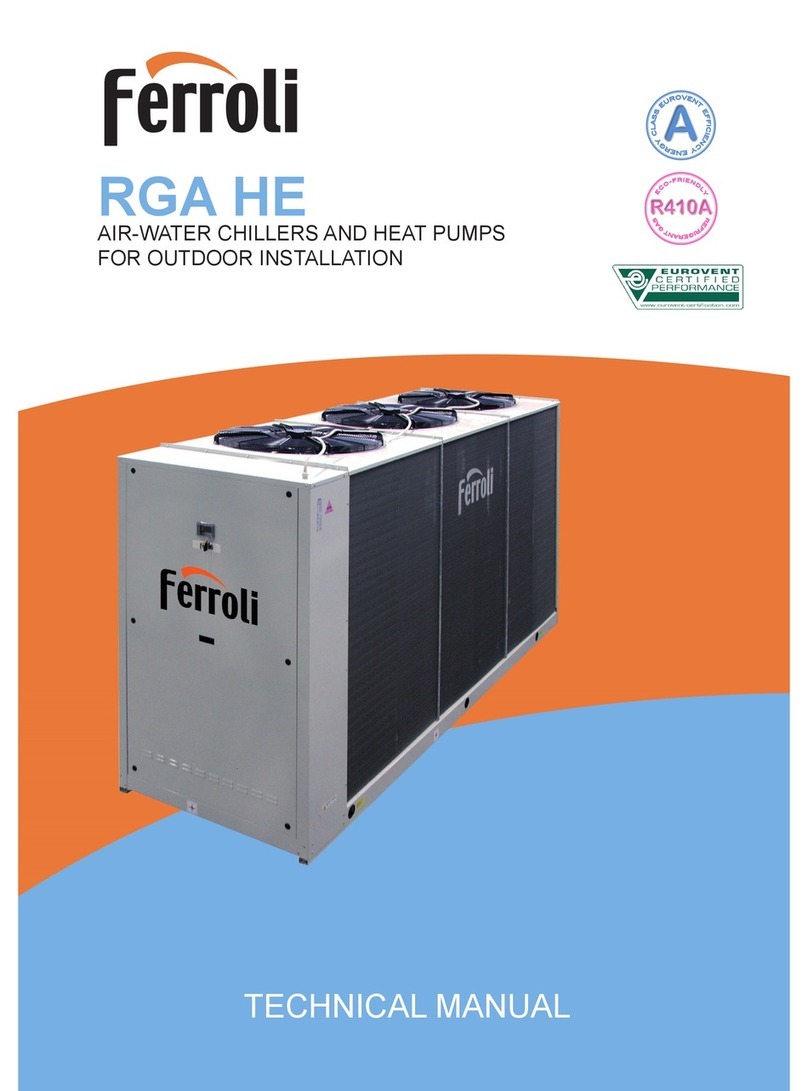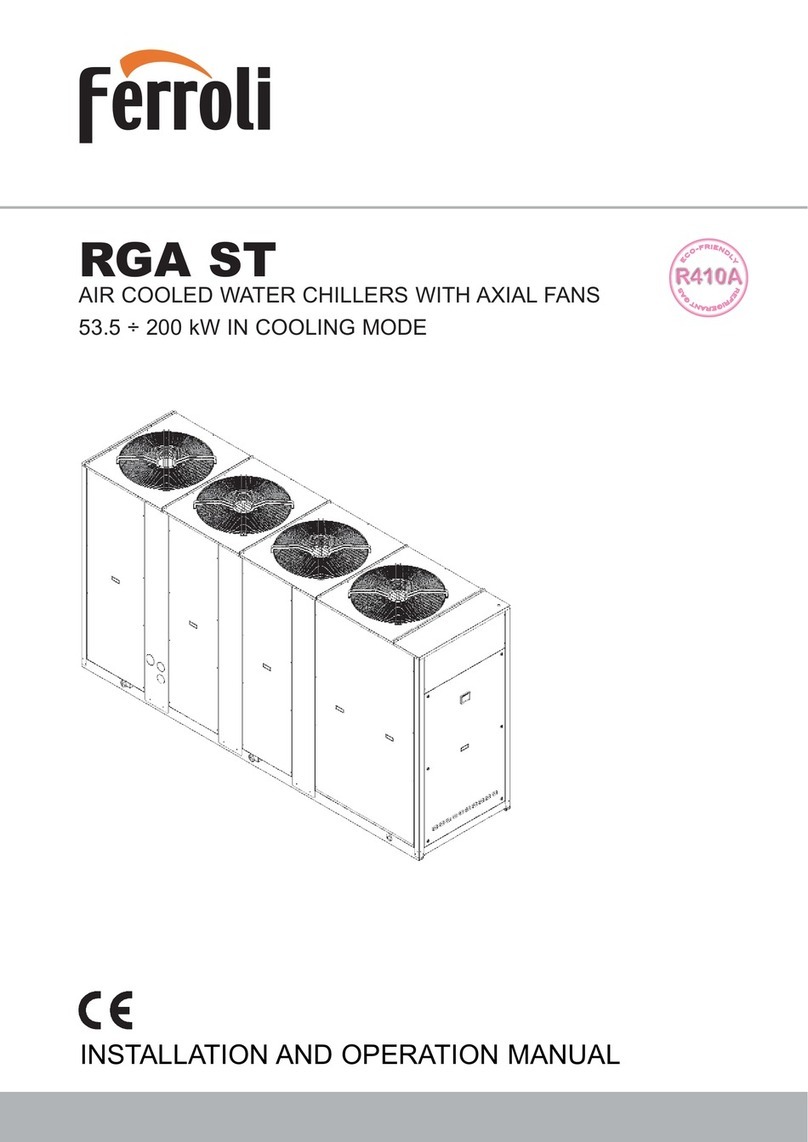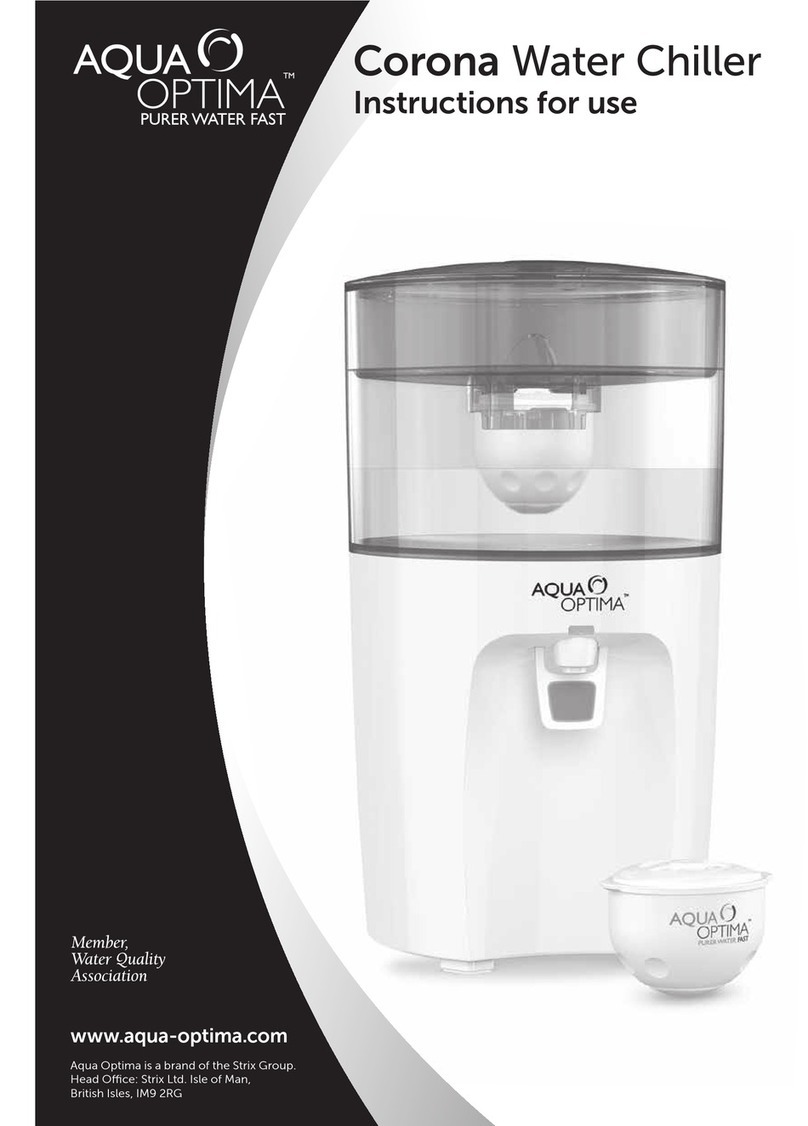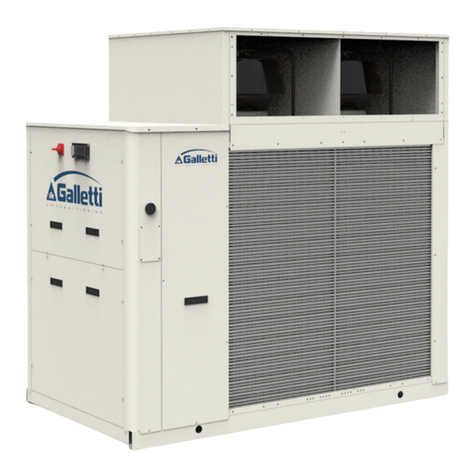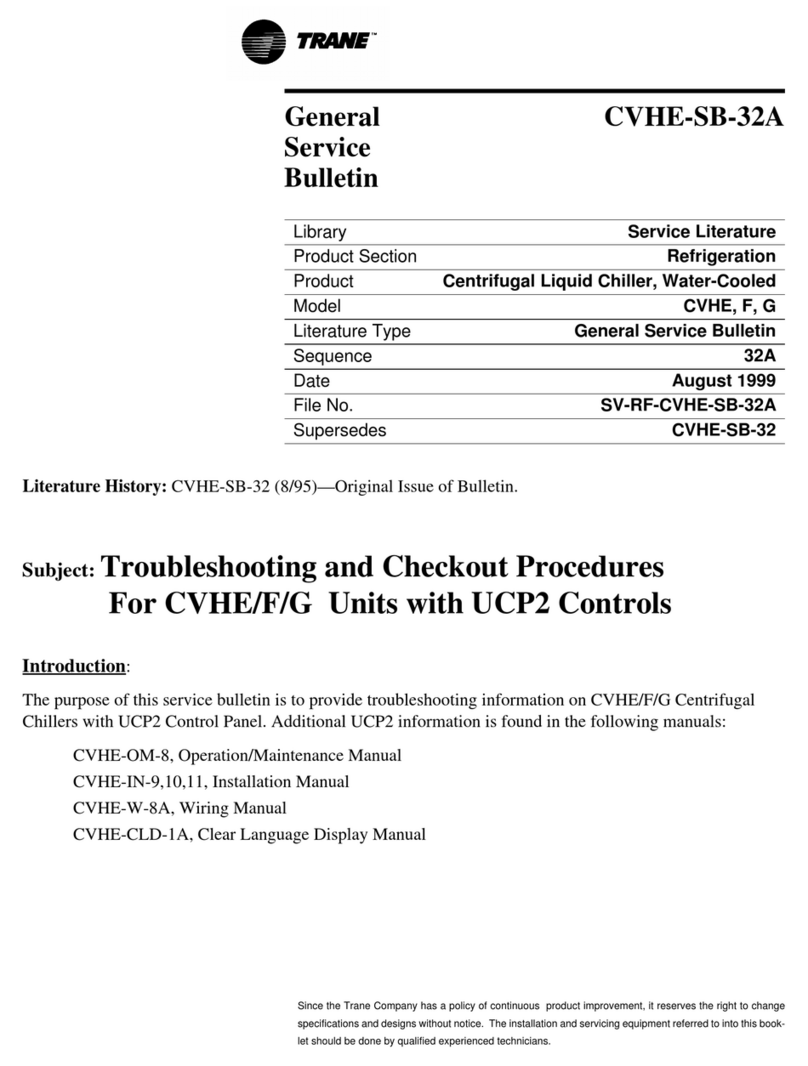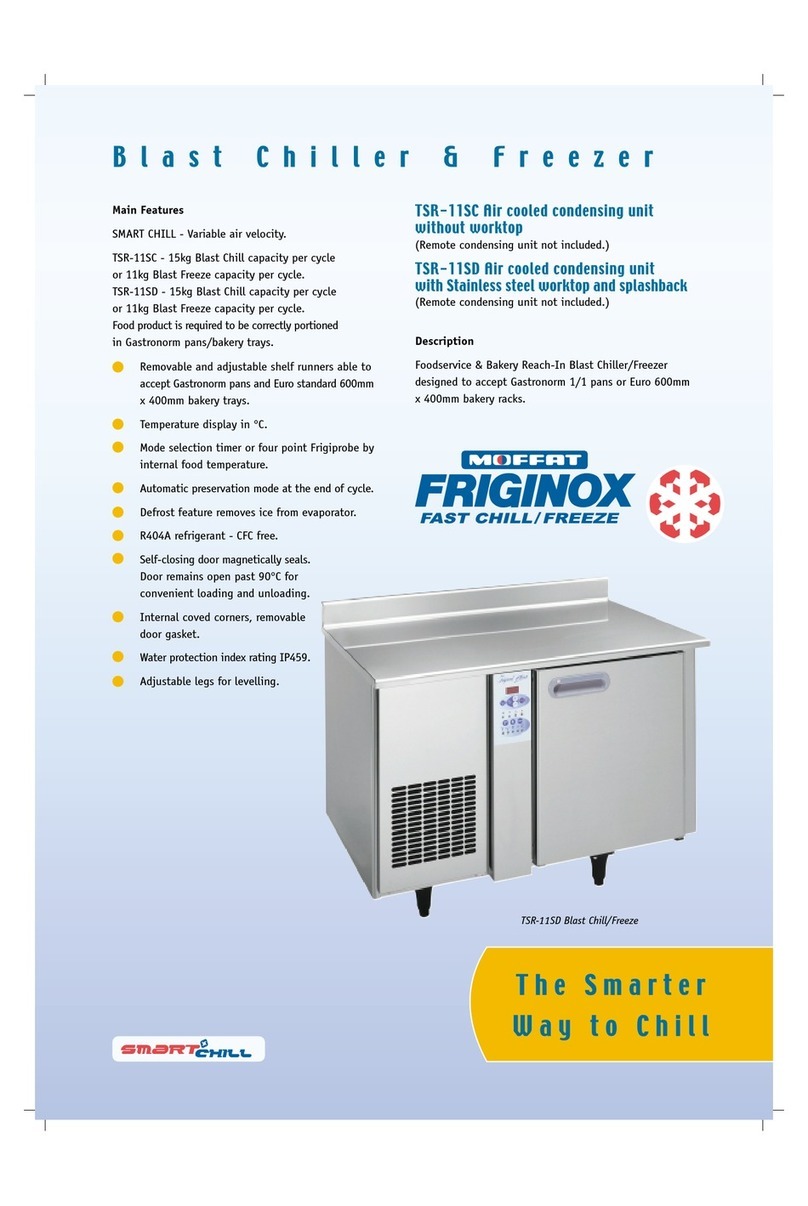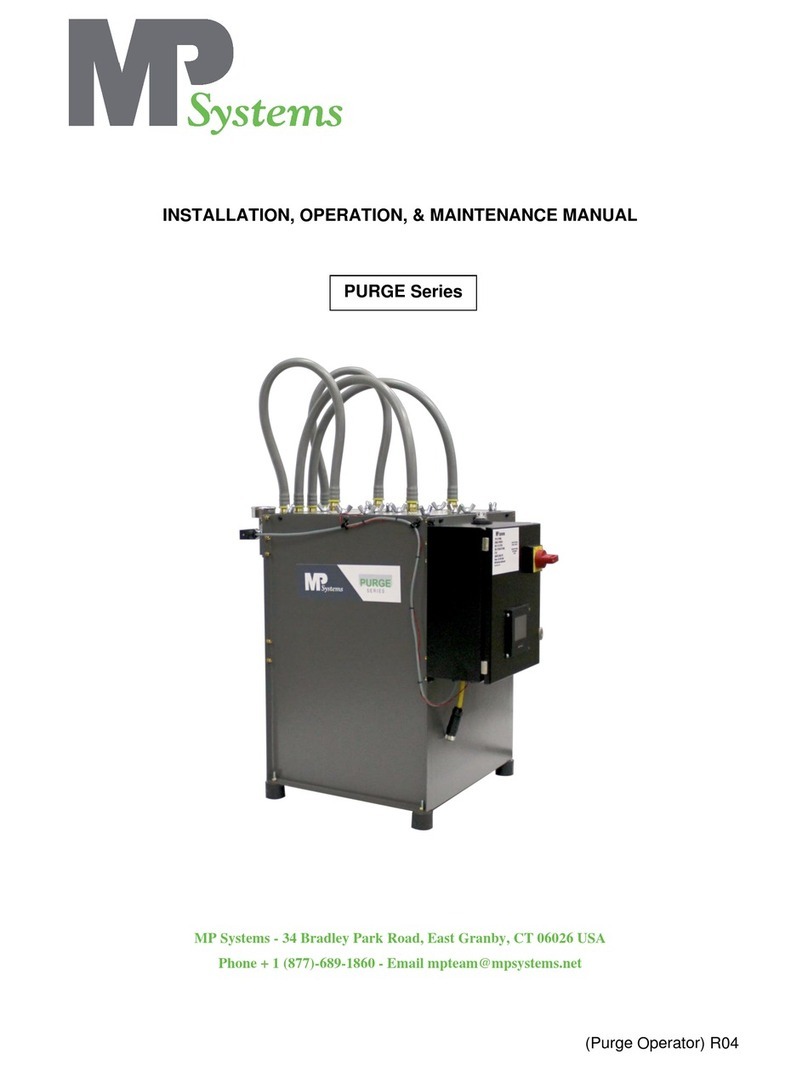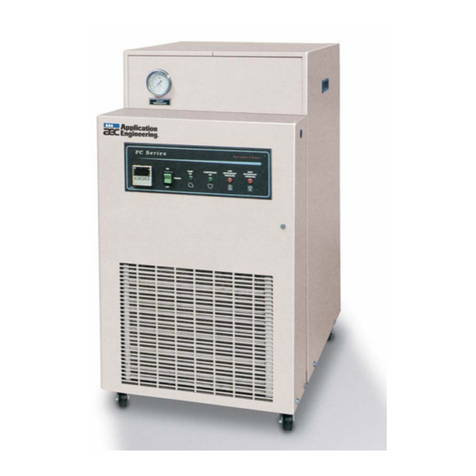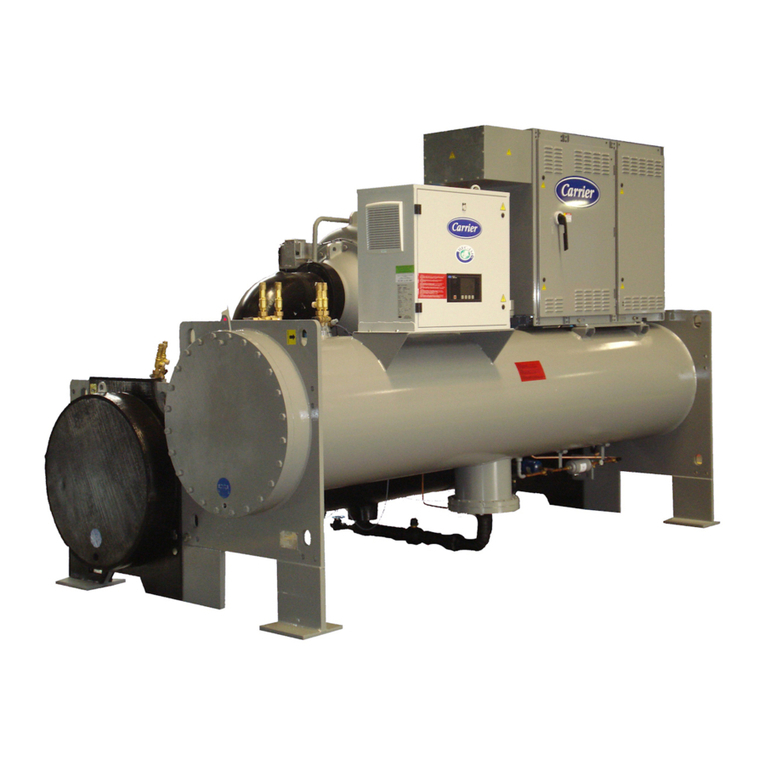
7
• Any repairs or maintenance must be performed by the technical support of the manufacturer
or by qualified personnel, in accordance with this publication.
• Preferably use original spare parts when replacing components.
• If the refrigerant should leak, ventilate the room. The liquid refrigerant produces toxic gas
when exposed to a flame.
• In the case of a malfunction or spill of liquid or gas refrigerant, set the main switch to "off" and
close the shut-off valves. Promptly call technical support or professional personnel. Do not
intervene personally on the unit.
• If the outside temperature can drop below zero, there is a freezing hazard and the system
must be drained or anti-freeze must be added.
• Based on CE Standard no. 842/2006 on certain fluorinated greenhouse gases, it is mandatory
to indicate the total amount of refrigerant in the installed system. This information is present
in the technical plate found in the outdoor unit.
• This unit contains fluorinated greenhouse gas covered by the Kyoto Protocol. Maintenance
and disposal must be carried out only by qualified personnel.
1.10 Basic safety rules
Using products that require electricity and water require some basic safety rules to be complied
with, such as:
It is prohibited to operate the unit before having disconnecting it from the power supply by
setting the main switch to "off".
It is prohibited to modify the safety devices or the settings without authorisation and
instructions from the manufacturer of the unit.
It is prohibited to pull, detach or twist the electrical cables coming from the unit, even if it
is disconnected from the power supply.
It is strictly prohibited to touch any moving parts, stand between them or introduce
pointed objects through the grids.
It is prohibited to use gas and water pipes to earth the unit.
It is prohibited to touch the unit when barefoot or with wet or damp parts of the body.
It is prohibited to stand on the unit, sit down on it and/or lean any type of object against it.
It is prohibited to dispose of and leave the packaging material in the reach of children as it
can be a potential source of danger.
It is prohibited for children or unassisted disabled persons to use the unit.
It is prohibited to introduce R410A in the atmosphere: R410A is a fluorinated greenhouse
gas referred to in the Kyoto Protocol with a Global Warming Potential (GWP) of 1975.
1.11 User guidelines
• Keep this manual together with the wiring diagram in a place that is accessible by the
operator.
• Take note of the unit identification data so as to provide them to the service centre when
required (see the "Machine identification" paragraph).
• It is recommended to keep track of the operations carried out on the unit, so as to facilitate any
troubleshooting.
• In case of a fault or malfunction:
- verify the type of alarm to notify the service centre;
- immediately disable the unit without resetting the alarm;
- contact an authorised service centre;
- request original spare parts.
• Request the installer to be trained on:
- switching on/shut-down;
- shutting down for long periods;
- maintenance;
- what to do/not to do in case of a fault.
1.12 Machine description
1.12.1 Features
Frame.
Self-supporting galvanised steel frame further protected with polyester powder painting.
Easy to remove panels allow access to the inside of the unit for maintenance and repair
operations.
Compressors.
Scroll with oil sight glass.
They are fitted with internal overheat protection and crankcase heater, installed on rubber shock
absorbers.
Fans.
Axial fans directly coupled to a three-phase electric motor with external rotor.
A safety fan guard is fitted on the air flow outlet.
Fans with low rpm are fitted on super silenced units and therefore some models have more fans.
Condenser.
Made up of two finned coils with copper pipes and aluminium fins. Circuits are made to create
two independent circuits.
Circuits are made so as to create two independent circuits.
Evaporator.
Evaporator AISI 316 stainless steel braze welded plates type with two independent circuits on the
refrigerant side and one on the water side, complete with water differential pressure switch. On
the Heat Pump units it is always installed an antifreeze heater.
Electrical board.
Includes: main switch with door safety interlock; fuses; overload protection for compressors and
thermocontacts for fans; interface relays; electrical terminals for external connections.
Microprocessor.
For the automatic control of the unit.
It allows the continuous display of the operational status of the unit, control set and real water
temperature and, in case of partial or total block of the unit, indication of security device that
intervened.
Cooling versions refrigerant circuit.
Each unit includes two independent refrigerant circuits.
Made of copper pipe, it includes the following components on all models: electronic thermostatic
expansion valve; filter drier; liquid and humidity indictor; high and low pressure switches (fixed
setting); safety valve in 8104P÷12240P models; liquid line shut-off valves in 8104P÷12240P
models.
Heat pump versions refrigerant circuit.
The unit in heat pump version, in addition to the components of the cooling only unit, includes
for each circuit: 4-Way inversion valve; liquid separator on the suction line; liquid receiver; check
valves; liquid line shut-off valves in 8104P÷12240P models.
Water circuit.
It includes: evaporator; temperature sensor; antifreeze sensor; manual air vent; water drain.
